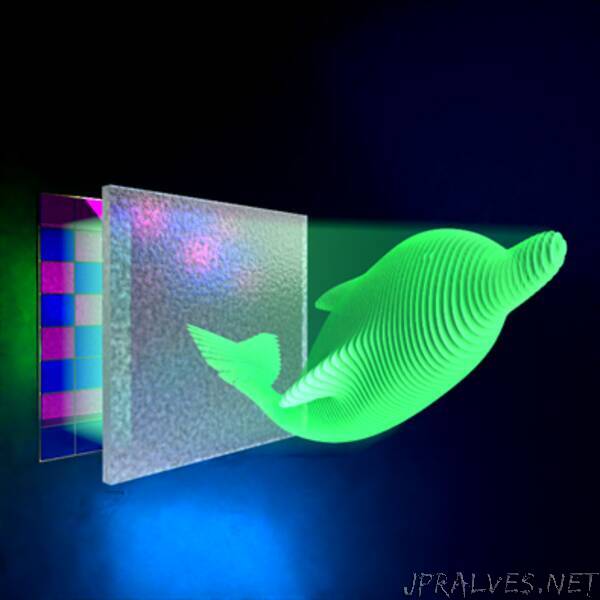
“Since the invention of holography by Denis Gabor in 1956, it is widely believed that optical holography is an ideal way to achieve a naked-eye 3D display. Nonetheless, how to dynamically reconstruct a 3D holographic display of realistic and stereoscopic scenes has been a major challenge, and the generation of a real 3D hologram is especially the most prominent bottleneck problem. GONG Lei’s research group from the Department of Optics and Optical Engineering, University of Science and Technology of China (USTC), together with Prof. QIU Chengwei from the National University of Singapore (NUS), and Prof. LIANG Jinyang from the National Academy of Sciences of the University of Quebec in Canada, proposed a new method of ultrahigh-density 3D holographic projection to solve those key problems. Their research results titled “Ultrahigh-density 3D Holographic Projection by Scattering-assisted Dynamic Holography” was published online in Optica on April 6th, 2023.
The 3D hologram demands continuous precise depth control of reconstructed objects. In other words, the stronger the control ability of the hologram is, the higher the effective projection plane density is; thus, the more realistic the image of the reconstructed object will be observed by human eyes. Dynamic holographic projection usually relies on a spatial light modulator (SLM) to modulate the optical field wavefront to reconstruct object image information. However, even with the most advanced SLM, the hologram’s depth-control ability of the hologram currently generated is still quite limited. In addition, crosstalk between images in planes of various depths further reduces the quality of the holographic projection. Therefore, the low depth resolution of the projection plane and high crosstalk between planes remain two key limitations for generating realistic 3D holograms. The research group introduced light scattering into three-dimensional holographic projection technology, and meanwhile, overcame the two key problems, realizing ultrahigh-density three-dimensional dynamic holographic projection.
The researchers invented scattering-assisted dynamic holography (3D-SDH) in this work. 3D-SDH greatly improves the range of adjustable spatial frequency of optical systems by using the multiple scattering of light. At the same time, the speckle field transmission properties are developed to reduce the correlation of optical fields at different depths. The limit of the depth of field (DoF) based on Fresnel holography is reduced by more than 3 orders of magnitude, and the crosstalk between different projection planes is greatly suppressed.
The research is highly praised in the domain. Laser Focus World conducted an email interview with the group about the technology, titled “Researchers exploit disordered scattering to improve depth control for holograms”, featured as TOP STORIES. Photonics Hot List, the online video program of the journal also covered it correspondingly.”
